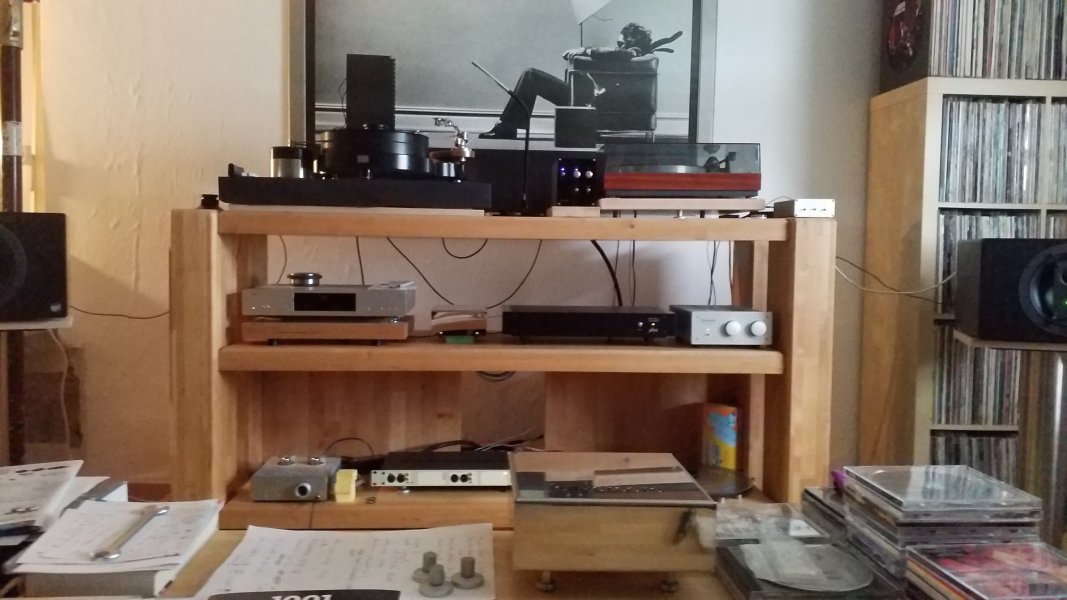Awesome...Will you be trying out different cards as well? Mono? Optical? Thx
Stereo (RCA) + Optical - yes
/ Marcus, www.perfect-sense.se
Awesome...Will you be trying out different cards as well? Mono? Optical? Thx
if you come from the uk why not a tron nemesis phono. world class phono ok 2 boxes( heavy) but not a standard wide.
View attachment 141642
Nemesis RIAA Phono Stage - Tron Electric
Once in a lifetime something really special comes along which changes peoples perception of what is possible in terms of performance and quality. Enter the Nemesis! A valve phono amplifier all others will be judged against. RIAA Phono Amplifier It took 5 years to locate all the parts to build...tron-electric.co.uk

No, I don't know any other transistor phono with so few weaknesses in music reproduction.I had my Basis tt, Airtangent arm, compressor pump and a few thousand lps stored away 7 years due to lack of room.
I started to stream music and was appalled by the sound quality in the beginning.
To my surprise after spending a boatload of money streaming did sound musically engaging and I was and am still happy with it.
A new home, enough room for my analog toys.
I would like to add a CH Precision 1 to my L1, X1, A1.5.
When budget allows, sigh. Right now my Klyne 7 phono stage will have to do.
Will my vintage Klyne be embarrassed by today’s phono stages? What to expect from it and new phono stages?

Probably not!Will my vintage Klyne be embarrassed by today’s phono stages? What to expect from it and new phono stages?
the Kline 7 is a fine component, I used one for many years, the 7.5, excellent, but there is better, Sutherland big loco much better, to beat the Klyne you are looking at $20k on the new market IMO, if you like the klyne I wouldn't waste my time on tubes for what its worthA great component is a great component. The Klyne is just that. Anything that’s potentially better will cost an arm and a leg. Tubes are always there for something different.
Agree. CH P1 might be available used with the P10’s getting into the market. Lots of high end SS. I think Gary Koh’s Genesis SS phono is more of a new design effort. The Sutherland is great as well.the Kline 7 is a fine component, I used one for many years, the 7.5, excellent, but there is better, Sutherland big loco much better, to beat the Klyne you are looking at $20k on the new market IMO, if you like the klyne I wouldn't waste my time on tubes for what its worth
FWIW a lot of crackle on LPs isn't the LP at all but instead is generated by the phono section.Best to my ears .
FMA
It has decrackle also
Sure depends on what state your vinyl is in.FWIW a lot of crackle on LPs isn't the LP at all but instead is generated by the phono section.
You'll know if your phono section is an exception if changing the 'cartridge loading' has no effect.
Yes. In my case, Minnesota.Sure depends on what state your vinyl is in.
very fine pieceBest to my ears .
FMA
It has decrackle also
I have a lot of used records, some have a few scratches and other blemishes. The well preserved, and most newer records play without pops and ticks, unless one of the tubes, often Russian NOS are going bad. My 1986 SS pre with built in MM/MC phono is dead quiet and you can hear changes of loading the cartridge to the correct value quit clearly, something i consider a advantage, not a design flawYes. In my case, Minnesota.
I've bought used vinyl many times that does not have a tick or pop on an entire LP side. I'm very used to that. But I've found that in the digital community that's a major complaint. I discovered serendipitously (and in a very graphic manner) about 35 years ago that if the designer was not careful about the design of the input of the phono section, ticks and pops could be generated by that phono section due to a poor high frequency overload margin.
This problem is very common with solid state amps and receivers built in the 1970s and 80s; I'm convinced an entire audiophile generation grew up thinking ticks and pops were endemic to LPs when really phono sections were responsible.
If you were to test the cartridge on the bench you'd find that the loading has zero effect on it at audio frequencies because its inductance is so low. Literally it can pass a 10KHz squarewave with no rounding and loading it has no effect on that.you can hear changes of loading the cartridge to the correct value quit clearly, something i consider a advantage, not a design flaw
| Steve Williams Site Founder | Site Owner | Administrator | Ron Resnick Site Owner | Administrator | Julian (The Fixer) Website Build | Marketing Managersing |







